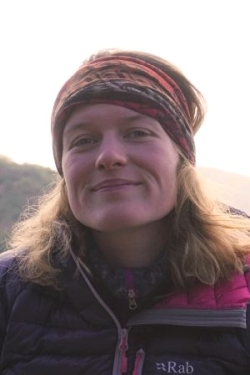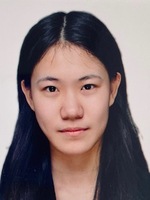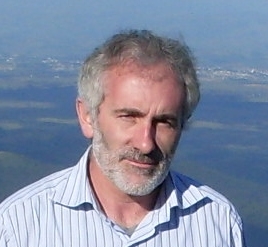Previous events - Page 38
Halo photography: retrieval of ice crystal properties in Arctic cirrus clouds
"Numerically investigating the Hall current effect on magnetic reconnection"
PhD candidate Samuel AS Welch at the Department of Biosciences will be defending the thesis "Predicting Environmental Risks from Pharmaceuticals under Future Scenarios: A Norwegian Example" for the degree of PhD.
The toolbox of algebraic manipulations that students traditionally learn to use in second-year calculus is not a good match for many applications in other disciplines, such as physics. Mastery of electromagnetism, for example, requires a geometric understanding of vector fields and their derivatives.
Furthermore, most mathematical modeling requires a robust understanding of the relationship between discrete data and its idealization as smooth mathematical objects. These applications require students to have rich concept images of differentiation and integration that go well beyond what is typically taught in second-year calculus.
This talk describes efforts at Oregon State University to help students master the use of geometric reasoning in such physical and geometric contexts, in both mathematics and physics courses. Several examples will be presented where language differences between disciplines lead to student difficulties, as will some of the methods and tools that we have developed to address them.
Sarcopterygian Fishes from the Early Triassic of Svalbard: The Fish Niveau and Grippia Bonebed
The role of GCN2 in prostate cancer
Right place, right time: Influences on breeding start in three Norwegian kittiwake (Rissa tridactyla) colonies
Artificial intelligence (AI) and deep learning approaches are often considered black boxes, i.e. as a type of algorithms that accomplish learning tasks but cannot explain how. However, as AI/deep learning is increasingly absorbed as adopted for accomplishing cognitive tasks for human beings, it is becoming important that the deep learning models are understandable by humans, such that artificial and human intelligence can co-exist and collaborate. In critical tasks such as deriving, from given data, a correct medical diagnosis and prognosis, collaboration between artificial and human intelligence are imperative so that the suggestions or decisions from artificial intelligence are both more accurate and more trustworthy.
Doctoral candidate Maaike Francine Maria Weerdesteijn at the Department of Geosciences, Faculty of Mathematics and Natural Sciences, is defending the thesis Solid earth deformation due to glacial mass changes above low-viscosity upper mantle: Model development, importance of contemporary ice melt, and an application to southeast Greenland for the degree of Philosophiae Doctor.
By Sara Goodacre from the University of Nottingham, UK
Variability of Lagrangian Coherent Structures in an Ocean Ensemble Prediction System
Doctoral candidate Linn Neerbye Berntsen at the Department of Chemistry, Faculty of Mathematics and Natural Sciences, is defending the thesis “Development of New Synthetic Methods for the Preparation of N-functionalized Hydantoins”, for the degree of Philosophiae Doctor.
Jie Hou will defend her thesis “Experimental Sensor Systems for Assessment of Tissue Viability — Monitoring the effects of ischemia-reperfusion injury” for the degree of Philosophiae Doctor at the University of Oslo, Faculty of Mathematics and Natural Sciences.
Photogrammetry of Unstable Rock Slopes
Welcome to our GEOHYD Lunch Seminar Friday 9th of June @ 12:15 in Aud. 2, Geology building, or via video link using Zoom. The seminar is held by Regine Hock (UIO) & David Rounce (CMU).
"Emulating the Non-Linear Matter Power-Spectrum with Mixed Axion Dark Matter"
Luca Amendola, Institut für Theoretische Physik, Heidelberg University.
Snow Depth Retrieval and Downscaling using Satellite Laser Altimetry, Machine Learning, and Climate Reanalysis: A Case Study in Mainland Norway
Is it difficult to set aside time to write? The Academic Writing Centre organsises structured writing sessions for doctoral students.
Biology of Coastal European Eel (Anguilla anguilla) in Norway: Growth Analysis and Temporal Variation in Abundance
"Physics-Informed Neural Networks for Radiative Transfer in the Solar Atmosphere"
Mapping Flood Inundation Using Sentinel 1 and Sentinel 2 Data and the Google Earth Cloud Processing Platform
Many have tried to adapt Clemens and Griffiths's approach to irrationality of cubic threefolds to higher dimensions, using different invariants in place of H^3(X,Z): the transcendental part of H^4, derived categories, quantum cohomology... I will report on my attempt to use higher algebraic K-theory, which turns out to be strictly weaker than what Voisin and Colliot-Thélène have already gotten from Bloch-Ogus theory, but (I think) in an interesting way. For a positive result, I can show that the higher K-theory of Kuznetsov's K3 category for a cubic or Gushel-Mukai 4-fold looks the same as that of an honest K3 surface.
Title: Environmental changes from glacier ice cores
Speaker: Margit Schwikowski, Paul Scherrer Institut








